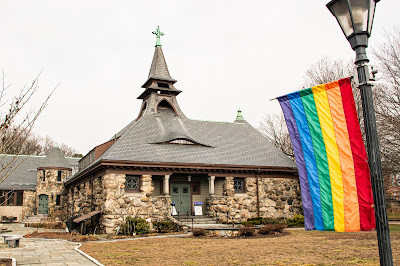From Mr. Paranoid:

Be careful.



While I get excited by sights like these, I have to remind myself to keep my head on a swivel, my eyes peeled, my ears on alert and my spidey senses a-tingling. Drug deals? Booze bashes? Gang rituals? Homeless encampment? Who knows what goes on in a place like this, even in the middle of the day.
Don't get me wrong: I'm not saying abandoned mills are filled with bad people doing bad things. Not all the time, anyway. I just don't want to get caught up in any of that funky shit goin' down in the city. I've got kids and a wife, and I don't want to be dragging my 57-year-old legs away from trouble with a camera lashed around my neck, my mother wondering, "Where is Dave? He was supposed to be here an hour ago."
Of course, I was also thinking, "How often do the cops check in on this place?" Sure, I'm a chicken. I don't do urbex that much, and when I do, I like to get in and out pretty quickly.
So, let's get to more photos and facts about this old mill complex in Manchester, Connecticut.
Ahead of a recent visit with my Mom, I decided to cruise through the Silk City. I'd stumbled across a reference online to a long-abandoned mill, so that was my first stop. I also checked out the city's main drag, which I will feature in a future post.
Manchester is an old mill town, which is why I wanted to visit. I grew up 30 minutes from here, but knew very little about the City of Village Charm, as its motto says. I knew there were a lot of intact mill buildings in the Cheney Brothers Historic District, but I stayed away...for now. "The 175-acre district includes over 275 mill buildings, workers houses, churches, schools and Cheney family mansions," according to Wikipedia. "These structures represent the well-preserved company town of the Cheney Brothers silk manufacturing company, the first America-based silk company to properly raise and process silkworms, and to develop the difficult techniques of spinning and weaving silk." At one time, this operation represented the world's largest silk mill.
But you know me, I'm not that interested in "well-preserved" places. I'll likely check out that district in a future visit, as I'm sure there are plenty of cool things to make photos of. Instead, I sought out the derelict mill just north of Union Pond, in the town's northern section, not far off Interstate 84.

I accessed these ruins quite easily, walking up a driveway off a very busy Route 30. I expected to see "No Trepassing" signs, but there were none. Neither did there appear to be security cameras or any other deterrent keeping urban explorers, taggers and party-seekers out. So what is this place?
I believe the smokestack is the only remnant of the former Oakland Paper mill. A predecessor mill on this property at one time produced paper for the Connecticut Courant (which became the Hartford Courant), according to this Journal Inquirer article. This site is just north of Union Pond; there was also a cotton mill at the southern end of the pond, where the Hockanum River is dammed.
Mills were first established on this site in 1784 by a company called Butler and Hudson, according to this Manchester Historical Society article. The mills "operated under various owners and through various reorganizations, manufacturing high-quality papers, including bank-note paper and all the post-card paper for the U.S. government," the article continues. "In 1899, the American Writing Paper Company, an early conglomerate, bought the Oakland Mill, and replaced former wooden buildings with brick. Like many businesses, the paper mills suffered financially during the Depression, and went out of business in 1933. Dexter Company bought the mills and processed pulp there for a while. Other businesses have used the buildings since then, including Raybestos, Conyers (cement casting), and a recycling center."
I don't know when the brick buildings were torn down. The buildings that remain are newer and sheathed in corrugated metal. I can see where the recycling center was. I didn't check out the entire site to see if there are other brick remnants other than the smokestack.


As with just about any site like this, especially ones that are freely accessible and right off the beaten path, there is graffiti galore.








So what's to become of this beaten-down, tagged-up, well-polluted site?
The 7.3-acre lot is on the market for $850,000. I imagine the cost to clean up the site is significantly higher than the price for the property. What would somebody build here? I'm guessing self-storage.












































